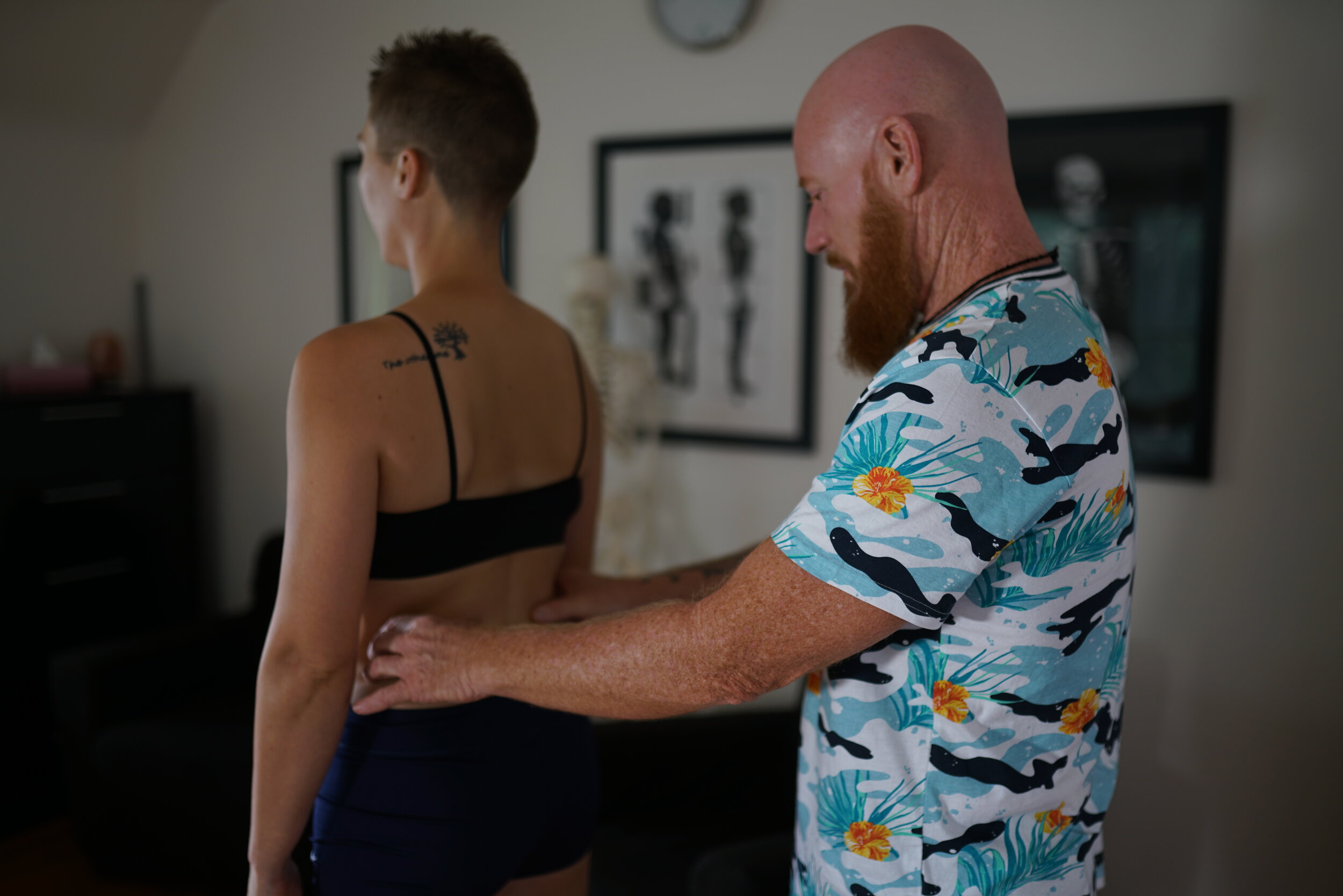Addressing Injuries
Improving recovery with Rolfing SI
Addressing Injuries
You will often hear people say Rolfing has helped them find relief when nothing else has. So, it may come as a surprise to learn the main focus of Rolfing is actually whole body structural integration and functional efficiency, as opposed to symptom relief. This key distinguishing feature of Rolfing from medicine and many other body-based approaches is what makes the Rolfing method so powerful: In the process of balancing the whole body many symptoms and conditions improve. Nevertheless, it is usually an unresolved chronic symptom or condition that first brings most people to give Rolfing a try.
Muscle and Joint Stiffness
Strain in the connective tissue membranes (fascia) that surround and penetrate muscles is what restricts and limits fluid movement. Rolfing restores flexibility and fluidity to the whole body by releasing and reorganizing the body’s fascial layers.
Neck and Shoulder Pain
Similar to sagging roof structures on buildings, neck and shoulder pain often lingers because support from body structure below is lacking. Rolfing not only relieves local strain in the head, neck and shoulders, it also helps to sustain it by improving support from the ground up. With Rolfing your head neck and shoulders balance on top with less strain.
Low Back Pain
Even in a healthy spine compression forces in the lower region are huge. When these forces are not balanced strain and related injuries can develop. Compensatory patterns soon develop in the feet, knees, legs, hips and even further up the spine. When working with back problems Rolfing is able to decipher the particular problems of the low back and balance them with the rest of the body so the lower spine can balance with less strain.
Repetitive Motion Injuries
When repetitive movements become ingrained in your body they are difficult to release and unwind without help. Whether repetitive strain happens as a part of work or recreation, Rolfing can help you untangle the pattern and learn options to prevent it from recurring. Rolfing works with all types of repetitive motion strain by re-balancing and aligning the whole body structure to restore fluid and efficient movement. During your Rolfing sessions you will learn ways to address the movement aspects of your activities so you can remain balanced.
Much of today’s work at computers puts people at risk. Long periods of time spent in front of the computer make it easy to forget or lose touch with our bodies.
Another form of repetitive motion problems come from exercise which can create well-worn movement pathways that become shortened with repetition.
Each session begins with an analysis of the clients postural patterns.
Surgery Rehabilitation
During the months and years after healing from an injury or surgery the body creates compensations that contort the balance of the connective tissue web. In the long run these contortions can interfere with comfort, balanced posture and fluid movement. Rolfing helps prevent tissue strains after injuries or surgery, correct contortions and compensations, and helps the body feel whole again.
Time and exercise are not adequate to fully recover and rehabilitate from injury, accidents, and surgery.
If you feel that you have not completely healed from an injury, accident or surgery, contact Clay today to discuss how Rolfing can help you reclaim your natural balance and movement.
More perspectives from professional athletes, dancers, musicians, actors, etc. can be found at www.rolf.org.




